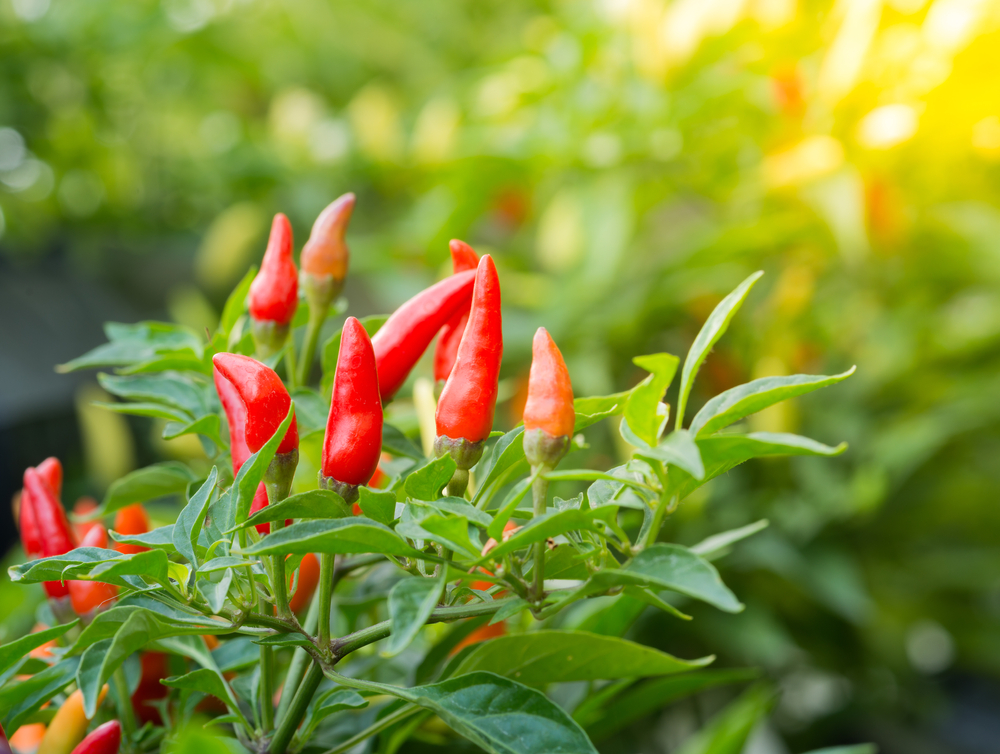Super chili peppers are a variety of pepper known for being both spicy and great for ornamental use. As far as ornamental peppers go, super chilis are some of the most versatile for their use in cooking with their medium heat and beautiful color.
What Is A Super Chili Pepper?
Super chili peppers get their name from their two best qualities: spiciness and beauty. Used primarily as an ornamental variety of pepper for their bold and bright red color, super chilis have also found their way into the kitchen due to the substantial amount of heat that they possess.
Super chilis are a relatively recent variety of Capsicum annuum developed in the United States in the late 1980s by Seminis. They received an AAS Winner award in 1988 for being a highly prolific producer.

What Do Super Chilis Taste Like?
Compared to other hot chili peppers, super chilis lack complexity in their flavor. While they have a considerable amount of heat, their overall flavor is neutral and only really gives off mild pepper-tasting notes.
I’d recommend using super chilis alongside other similar Thai chili peppers, such as the bird’s eye chili, if you’re looking for a lot of heat, or spur chilis, which are milder but offer more unique flavors. Blending different varieties of peppers when cooking is an excellent way to expand the flavor profile of your dish, as each pepper will bring something different to the table.
How Spicy Are Super Chili Peppers?
Super chili peppers have some kick, coming in at 40,000-50,000 Scoville heat units (SHUs) on the Scoville scale. This is about six times hotter than a jalapeno pepper, which comes in around 2,500-8,000 SHUs.
Other peppers comparable to chilis in terms of heat are tabasco, cayenne, and pequin peppers, all of which are in the 30,000-50,000 SHU range.
Cooking With Super Chilis
As a relative to other Thai chili varieties, it’s common to see super chilis used in various Thai and other Asian dishes. Super chilis can add the perfect amount of heat to spicy foods like tom kha gai or tom yum goong, which are soups that benefit from having an extra layer of spiciness.
You could also use super chilis to add heat to a particular marinade or pepper sauce recipe that you like. For example, if you want to tone down the heat, you could substitute super chilis instead of scotch bonnets in a traditional Jamaican jerk sauce.
How To Grow Super Chili Peppers
Super chilis are known best for being beautiful ornamental plants. While you can undoubtedly harvest the peppers to be used in your cooking, they also add some stunning visual elements to your gardens.

Plant Features
The fruit from the super chili pepper plant grows upright, allowing the brilliant pops of red from the peppers to stand out among the green foliage of the rest of the plant’s leaves. This makes super chilis perfect as accent pieces along your garden or pathways.
Growing Zones
Pepper plants grow perennially from season to season, but you can also choose to plant them annually. Super chili peppers can grow year-round as perennials in zones 9a-11b, but can be planted as annuals or overwintered even in zones as low as 3b. In zones lower than 9, the key is overwintering your heirloom pepper plants once the first frost hits at the end of your growing season.
Planting Your Peppers
If you choose to start your plants from pepper seeds, you should start them indoors individually in small pots. Bury your seeds about ½ inch deep into potting soil, and allow them a couple of weeks for germination.
After about 6-8 weeks, your seedlings should be big enough to transplant into your garden. Make sure to plant each super chili seedling about 18-24 inches apart, as they grow pretty wide compared to other ornamental pepper plants.
Pepper Plant Care
Fortunately, taking care of ornamental pepper plants is fairly easy, as they don’t require much attention. As long as they’re getting about 1-2 inches of rain each week, you only have to water them occasionally. Like most other varieties of peppers, super chilis enjoy full sun at all times.
You’ll only need to fertilize your chilis once the first fruits appear. Fertilizing then is essential for ensuring that your peppers grow as big and beautiful as they can get!
Harvesting Your Peppers
If you decide to use some of your super chilis for cooking, you’ll want to harvest them at just the right time. Young chilis will start green in color before fully ripening to a deep red. Once they are red and about 2-3 inches in length, they are ready to eat.
What Else Can You Do With Super Chili Peppers?
If you have a bunch of chilis left over once your growing season is over, you can dry them for ground chili powder or use them in ristras or wreaths.
If you want to keep using them in the kitchen throughout the winter, dehydrate them to be used as a seasoning or pickle them as a condiment or garnish. These processes are simple and will add a lot to your kitchen pantry. Here’s an excellent intro to drying your peppers, as well as a method for pickling spicy peppers.
Ornamental peppers are beautiful in the garden, so why not make them decorative in your home? Chili ristras and wreaths have recently grown in popularity for home decor and are a great way to bring some bright colors to your house’s interior.
The concept for ristras and wreaths is similar, as you’ll be tying bunches of your super chili peppers together tightly to form one long bundle of peppers. The peppers look stunning when bundled together in a ristra, forming an organic art piece that also doubles as an effective drying method for your peppers.

